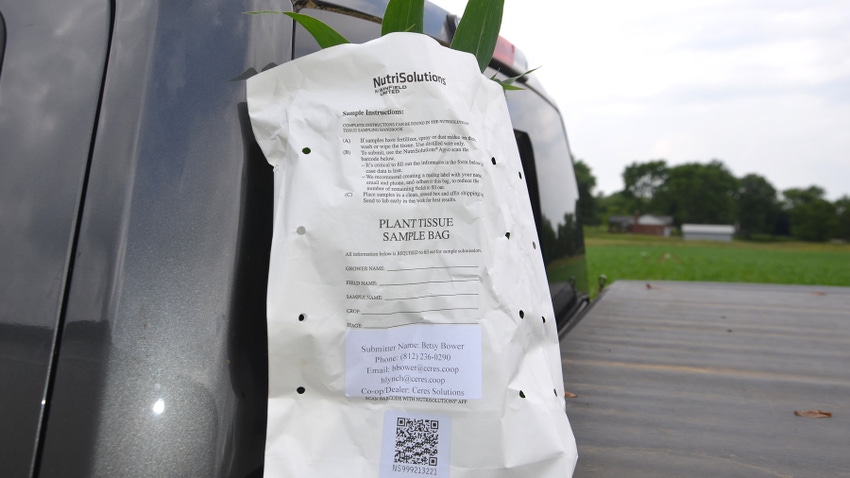April 28, 2023

If I pull tissue tests at V5, what corrective measures could I take? What about zinc, boron, phosphorus and potassium? Are these tests accurate enough to use for this kind of decision-making?
The Indiana Certified Crop Adviser panel answering this question includes Betsy Bower, agronomist for Ceres Solutions, Terre Haute; Abby Horlacher, Nickel Plate Consulting, Frankfort; Brian Mitchem, proprietary products manager for Nutrien Ag Solutions, Fort Wayne; and Dan Quinn, Purdue Extension corn specialist, West Lafayette.
Bower: Read Bower’s extensive answer at Tissue testing takes crop management to next level.
Horlacher: Tissue tests are a snapshot in time. They are representative of a page in a book. I would not recommend pulling only one tissue test and making a financial decision with it. When pulling tissue tests, you want to have results from multiple weeks so you can create a trend line, plus you need soil test data and weather history and forecasts. All these factors will determine how you move forward with a treatment plan. When looking at foliar feeding options, you want to go with a product that has a high enough nutrient content to correct your deficiency.
Mitchem: Tissue testing can be a valuable tool to help with crop nutrition plans. With tissue analysis, we can identify a needed element and apply that specific nutrient at corrective levels, as opposed to applying a more broad-spectrum combination product that has minimal levels of several elements.
There are specific timings where elements are more critical. As an example, an early application of manganese in corn will have limited yield impact regardless of tissue test results. But an application made at the V10 to V12 corn growth stage can have a major yield impact.
Many options exist for both macronutrient, micronutrient and combination nutrient products. Early-season products often include zinc and boron when applied at V5. Sulfur can also be an issue with lighter soils.
I have found the most valuable growth stage for corn tissue analysis is sampling the ear leaf. That is the largest leaf on the plant and is the direct food source to the developing ear.
Quinn: When pulling tissue tests at V5, it may also be worth taking a soil test to complement the tissue test results. Also, if you are noticing any issues in the field, take a tissue test and a soil test from corn that doesn’t look too healthy and from corn that looks really good for a comparison of the analysis results.
It is important to understand that an early tissue test can often be just a “snapshot in time.” For example, environmental conditions may be impacting the nutrient availability or uptake in the plant at that specific time. In addition, corn sampled during rapid growth may appear deficient in many nutrients because their concentrations are currently “diluted” within the rapidly growing plant.
Tissue samples can be a valuable tool to diagnose issues. However, as noted, always try to complement it with a soil test and also take samples from multiple different areas, good and bad, to get accurate comparisons and assessments. The recently updated Tri-State Fertilizer Recommendations provide plant tissue nutrient sufficiency ranges for V5 corn.
Read more about:
Tissue TestingYou May Also Like




